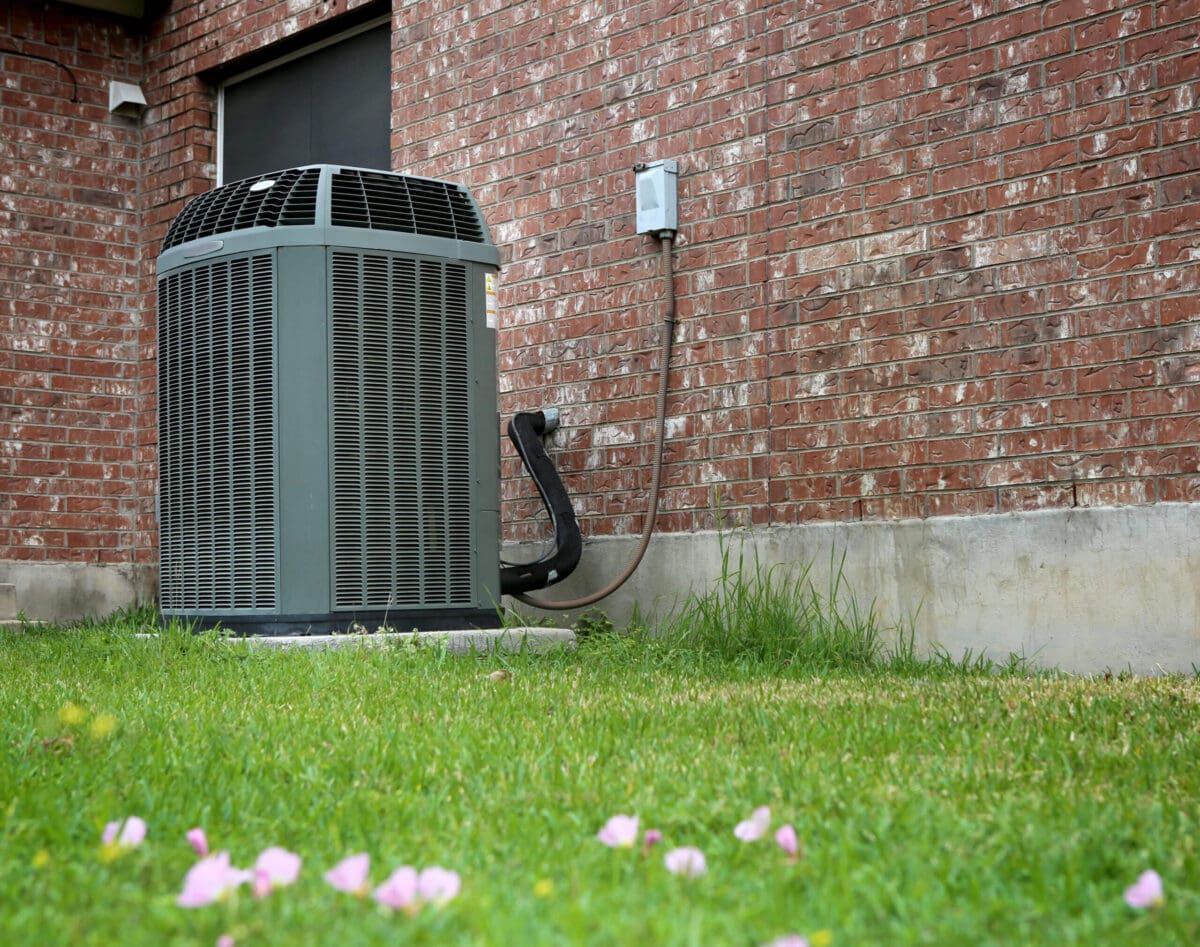
You might be wondering what the heat pump defrost cycle is? This ensures your heat pump operates efficiently, especially during those chilly months.
The defrost cycle prevents ice buildup on your heat pump’s outdoor unit. Ice can impede performance and damage the system; that’s why understanding this cycle is key to maintaining your heat pump’s health.
This guide gets deep into the FAQs about the heat pump defrost cycle. We’ll unravel the mysteries behind how it works and its importance.
Keep reading to learn more about your heat pump. You’ll discover the ‘what’ and ‘why’ and also the ‘how’ of the defrost cycle.
Table of Contents
What is The Defrost Cycle?
Heat pumps are vital in many homes. They provide comfort throughout the year. One crucial aspect of their function is the heat pump defrost cycle. This cycle is not just a feature but essential for the heat pump’s efficiency and longevity.
Defrost mode in a heat pump is like a winter coat for your system. It protects the heat pump from ice and frost build-up. Why do heat pumps have defrost systems? They ensure the heat pump can transfer heat effectively, even in cold weather.
Imagine a heat pump without a defrost cycle. It would be like a car with no windshield wipers in the rain. The heat pump would struggle to function under layers of ice. This cycle is a game-changer for heat pump performance in cold climates.
How Does the Heat Pump Defrost Cycle Work?
Let’s get into the workings of the defrost cycle of a heat pump. The cycle is a marvel of modern technology. It uses smart sensors and controls to maintain efficiency.
The heat pump monitors the outdoor coil temperature by detecting frost formation. When frost is detected, the heat pump shifts into the defrost cycle, a crucial maintenance aspect.
According to the International Association of Certified Home Inspectors, the heat pump operates in the defrost cycle until the outdoor coil temperature gets to 57° F. This temperature is optimal since it ensures frost removal without wasting energy.
What happens during the cycle? The heat pump reverses its operation by providing heat to the outdoor coils. This heat melts away the frost, a clever use of the system’s capabilities.
The defrost cycle is a balancing act ensuring the heat pump runs efficiently. It prevents ice build-up and conserves energy. All these factors contribute to a well-functioning heat pump system.
How Often Should a Heat Pump Switch to the Defrost Cycle?
The frequency of the defrost cycle varies. It depends on several factors, such as outdoor temperature, humidity, and system usage.
If a heat pump goes into defrost mode a lot, it might indicate an issue. Frequent defrost cycles can strain the system, increasing wear and tear. This scenario underlines the importance of regular heat pump service.
In normal conditions, the defrost cycle occurs as needed. It activates when frost accumulation reaches a certain level. The system is designed to balance defrosting with regular heating operations.
Homeowners play a role in this process since regular heat pump maintenance is vital. One simple yet effective step is to change your filter regularly. A clean filter supports efficient operation and reduces the need for frequent defrost cycles.
The defrost cycle is a key element of a heat pump’s operation. It enhances efficiency and prolongs the system’s life. Regular maintenance and service ensure the cycle functions correctly. This care keeps your heat pump running smoothly, even in the coldest months.
How Can I Tell if My Unit Is in the Defrost Cycle?
Identifying when your heat pump is in defrost mode is crucial. It helps in understanding its operation and efficiency. Look for these signs:
- Your heat pump switches to blowing cold air, even in heating mode
- You might notice the outdoor unit making different sounds. However, these sounds are normal during the defrost cycle.
- Steam is another telltale sign from the outdoor unit during the cycle. This steam results from ice melting, a clear defrost cycle indicator.
- A temporary reduction in heating efficiency is also a clue. The heat pump focuses on defrosting, not heating your home.
The heat pump maintenance schedule can affect the defrost cycle. A well-maintained unit goes into defrost mode seamlessly, keeping an overall comfort level.
What Happens If A Heat Pump Doesn’t Defrost?
A heat pump that doesn’t defrost poses risks. Ice and frost accumulation on the outdoor unit can reduce efficiency, leading to higher energy consumption and costs.
The system can undergo increased strain, resulting in significant damage. It can shorten the lifespan of your heat pump; thus, regular heat pump service can prevent these issues.
In extreme cases, the heat pump might stop working entirely. A non-defrosting unit struggles to transfer heat, causing a complete system shutdown.
Changing your filter regularly is a practical part of maintenance. It helps the heat pump function properly, including the defrost cycle.
When Should You Be Concerned?
It’s normal for a heat pump to enter the defrost mode, but certain signs should raise concern. If your heat pump goes into defrost mode often, it’s a red flag since frequent cycles can indicate a malfunction.
Short defrost cycles are another concern. They might suggest a sensor or control issue, hampering the efficiency of your system. Loud noises or prolonged steam emissions are not typical. They can signal problems with the defrost mechanism.
Regular heat pump maintenance ensures the defrost cycle operates correctly. A professional heat pump service can diagnose and fix the issues and prevent these concerns from becoming major problems.
Be proactive about your heat pump’s health by observing its operation. Seek professional help if you notice unusual behavior. This vigilance can save you time and money and keep your heat pump running efficiently for years.
How to Prevent Heat Pump Issues
Preventing issues with your heat pump is key to its longevity and efficiency. Regular maintenance and care to ensure your heat pump operates at its best, especially during the defrost cycle.
- Regular Inspections: Schedule inspections by professionals. They can spot potential problems early. This foresight saves you from future hassles and expenses.
- Cleaning and Clearing: Keep the area around your heat pump clear by removing debris and leaves. Clean filters and coils regularly to improve airflow and efficiency.
- Timely Repairs: Address any issues promptly. Don’t wait for small problems to become big ones. Early repairs can prevent more serious damage.
- System Upgrades: Consider upgrading outdated components. New technology can enhance your heat pump’s performance by making it more energy-efficient and reliable.
- Seasonal Preparation: Prepare your heat pump for different seasons. This preparation includes checking settings and performing specific maintenance tasks.
 In Jacksonville, FL, Waychoff’s offers expert Heat Pump Services. Our team of HVAC technicians is skilled and knowledgeable. They understand the nuances of heat pump operation. They are particularly adept at handling defrost cycles. Our services include everything from routine maintenance to complex repairs.
In Jacksonville, FL, Waychoff’s offers expert Heat Pump Services. Our team of HVAC technicians is skilled and knowledgeable. They understand the nuances of heat pump operation. They are particularly adept at handling defrost cycles. Our services include everything from routine maintenance to complex repairs.
Choosing Waychoff’s means choosing peace of mind. Our technicians ensure your heat pump functions optimally. They help prevent issues before they arise. Our focus is on extending the life of your unit. We ensure your home remains comfortable year-round.
Taking care of your heat pump is an investment in your home’s comfort and efficiency. Partner with Waychoff’s in Jacksonville for top-notch service.

